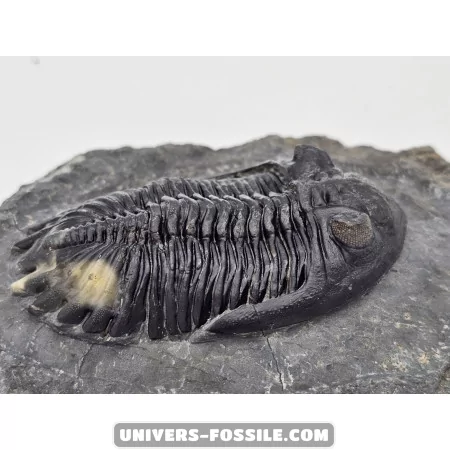Hollardops Trilobites: Fascinating Extinct Marine Creatures

Hollardops Trilobites
Hollardops trilobites are an extinct species of trilobites, a group of marine arthropods that thrived millions of years ago. These fascinating creatures were among the prominent inhabitants of the Paleozoic oceans, offering paleontologists valuable insights into ancient marine life.
Anatomy of Hollardops Trilobites:
- Segmented Body: Like all trilobites, Hollardops had a body divided into three longitudinal parts - the cephalon (head), the thorax (body), and the pygidium (tail).
- Calcified Exoskeleton: The outer shell of trilobites was formed of chitin and calcite, providing rigid protection against predators.
- Compound Eyes: Hollardops trilobites possessed large compound eyes, consisting of many small hexagons, giving them a panoramic view of their environment.
- Antennae: Although few fossilized specimens have retained their antennae, it is likely that Hollardops had them to detect environmental stimuli.
- Segmented Legs: Trilobites used their segmented legs to move along the seafloor, sifting through the
Hollardops
Habitat
Hollardops trilobites have been discovered in geological formations dating from the Middle to Upper Devonian period, around 390 to 370 million years ago. They thrived in seas abundant with diverse marine life, with trilobites playing key roles as both predators and prey.
Fossils of Hollardops have been unearthed in locations worldwide, including Morocco, Spain, Germany, and the Czech Republic. These findings offer crucial insights into the distribution and evolutionary history of this trilobite species.
Lifestyle
Similar to most trilobites, Hollardops likely inhabited the seafloor, feeding on organic debris and small organisms within the substrate. They utilized their segmented appendages to gather and consume food sources effectively.
This trilobite species served as prey for various marine creatures of its era, such as cephalopod mollusks and predatory fish. While their sturdy exoskeleton provided some defense against predators, many specimens exhibit damage from attacks and diseases.
Extinction
Just like all trilobite species, the fate of Hollardops eventually led to extinction, marking the end of their existence.
Hollardops Trilobites
The Hollardops trilobites were ancient marine creatures that roamed the oceans millions of years ago. They eventually became extinct by the end of the Permian period around 250 million years ago, during the mass extinction event that wiped out most life on Earth. The exact causes of trilobite extinction remain a topic of debate among paleontologists, but it is likely they were influenced by climatic changes, geological events, and evolutionary pressures.
Despite their extinction, Hollardops trilobites and other members of their order continue to fascinate scientists and paleontology enthusiasts worldwide. Their well-preserved fossils offer valuable insights into the biodiversity and evolution of ancient oceans, allowing us to better understand the history of life on Earth.
In conclusion, Hollardops trilobites are fascinating examples of the diversity of ancient marine life. Their fossils are precious treasures that allow us to travel back in time and explore the mysteries of prehistoric oceans.
